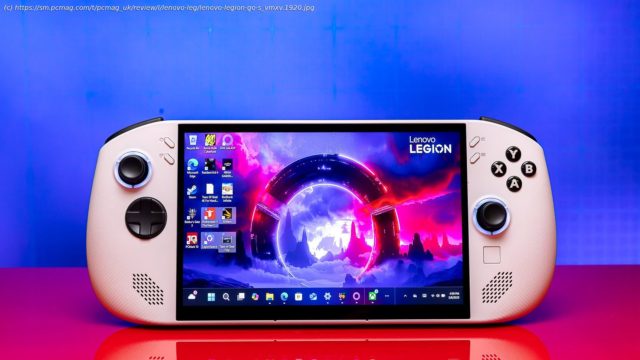A new entry-level gaming handheld in need of a price cut
Lenovo is eager to prove that expanding its Legion brand from gaming laptops to gaming handhelds wasn’t a one-hit wonder. The company’s first attempt at competing with the Steam Deck and Asus ROG Ally, the Lenovo Legion Go, was a big swing that mostly hit its mark, though it saw more than a few of the growing pains that often come with first-generation hardware. Nearly two years later, Lenovo is back with new hardware featuring AMD’s latest custom mobile gaming processor, the AMD Ryzen Z2 Go.
The Lenovo Legion Go S ($729) is a sleeker, slimmer redesign of the Legion Go. It improves on much of the original, cutting down on the system’s bulkiness by trimming the screen size, ditching the removable controllers, and improving the battery. But it comes up short where it counts: performance. The Legion Go S is an undeniable improvement compared with the first Legion Go, but the gains aren’t significant enough to warrant an upgrade. For that, wait for the true Legion Go successor expected later this year, or consider the Asus ROG Ally X, our current Editors’ Choice award winner in the category.Design: A New and Improved Handheld
The Legion Go S is not quite a sequel to 2023’s Lenovo Legion Go—in fact, it’s probably more accurate to compare it with something like the Nintendo Switch Lite—but that didn’t stop Lenovo from making more than a few key changes. The first is the device’s size: The original Legion Go measured in at 5.16 by 11.7 by 1.6 inches (HWD) and weighed 1.88 pounds, far bulkier and heavier than the likes of the Steam Deck OLED (1.41 pounds), the Asus ROG Ally X (1.49 pounds), and the MSI Claw (1.48 pounds). The trimmer Go S measures 5 by 11.7 by 0.8 inches and tips the scales at 1.61 pounds.
The new Go feels lighter in my hands, even if it’s still the heaviest. It’s also more comfortable, with an anti-slip texture around the console’s grips. The detachable controllers, one of the selling points of the original Go, are gone, though if you ask me, they were more trouble than they were worth. The kickstand on the back of the housing is also gone.
The Legion Go S features 32GB of DDR5 memory, 1TB of storage, and an AMD Ryzen Z2 Go CPU. The top of the machine houses two USB-C ports, each supporting 40Gbps data transfers, Power Delivery 3.0, and DisplayPort 1.4 for connecting to external displays. A 3.5mm headphone jack accompanies these ports. That’s one fewer connection than the Legion Go, which had a third USB-C port at the bottom. On the Legion Go S, that area instead includes a microSD card slot.
The screen has had a nip-and-tuck, measuring 8 inches diagonally (0.8 inch smaller than the original). Display resolution also takes a hit, landing at 1,900 by 1,200 pixels with a 16:10 aspect ratio and a 120Hz refresh rate, down from 1600p and 144Hz. You might think this a significant downgrade, but truthfully, you wouldn’t find many games (if any) that benefitted from the higher-resolution screen or its faster refresh rate at this screen size. Hence, the step back is one that many users won’t notice.
The resolution and refresh rate might differ, but the Legion Go S still has a 10-point IPS touch screen with 500 nits of brightness. The new display supports variable refresh rates (VRR), which was missing from the previous model. Two forward-facing 2-watt speakers and a dual-array mic are built into the machine. The touchpad module also returns, though it’s considerably smaller than the previous model’s.
Legion Space, a software tool for aggregating game launchers and managing device settings, also returns with a much-needed facelift. It’s similar to Asus’ Armoury Crate, providing a place to manage and purchase games. The tool also provides insight into the console’s settings and logistics, like CPU temperatures and fan speeds. It’s instantly available by pressing the Lenovo Space button at the top left of the screen.
Another noticeable difference is the use here of adaptive triggers, which are adjustable to your play style with the flip of a switch on the backside. For example, switching the trigger down allows for longer presses, ideal for racing games, while short trigger presses (with less travel time) might be better suited for twitchy action titles. Frictionless Hall-effect joysticks also make a return. The joysticks use a small magnetic field to detect position, eliminating stick drift and dead zones. Two additional paddles are also easily accessible on the machine’s backside.
Like the Lenovo Go, the Go S uses fans to draw cool air through the handheld’s generously perforated backplate, letting hot air out through the top vents. Without the kickstand, the vents have a little more room to breathe, and they’ll need all the space they can get, as the high-performance mode can reach up to 40 watts of TDP, up from 30W.






